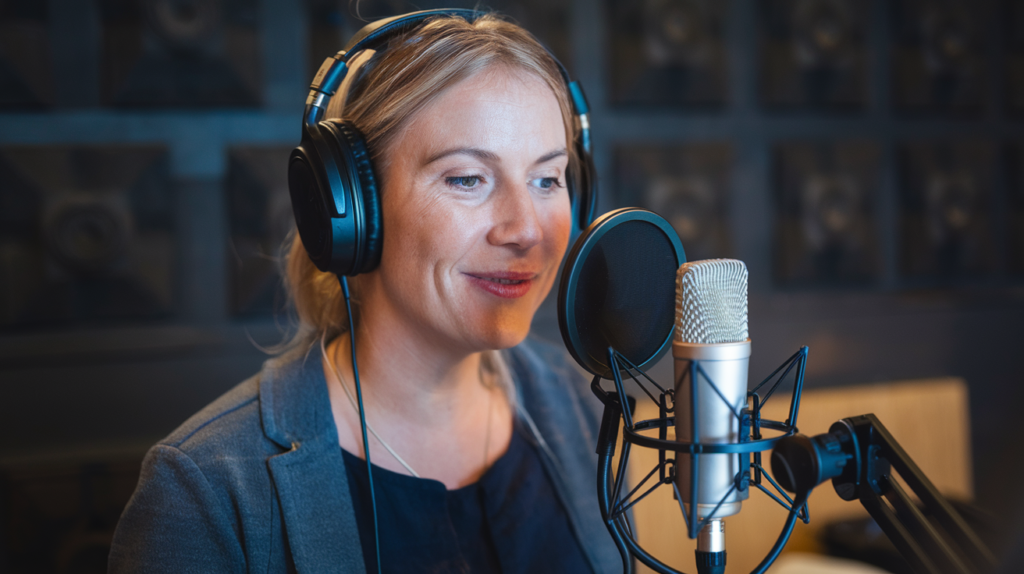Key Takeaways
- Cultural Preservation: Integrating the Māori language in schools plays a crucial role in preserving New Zealand’s cultural heritage and fostering student identity.
- Bilingual Immersion Programs: These programs enhance fluency in both English and Māori, leading to increased student engagement and improved academic performance.
- Culturally Responsive Teaching: Incorporating Māori history, traditions, and values enriches the educational experience and promotes inclusivity among diverse student populations.
- Community Involvement: Collaborations with local iwi provide valuable resources and cultural knowledge that strengthen ties between schools and their communities.
- Government Support: Initiatives like Te Ahu o te Reo Māori prioritize funding for resources, training, and curriculum development focused on the Māori language to ensure its growth in educational settings.
Ever wondered how the Māori language is shaping education in New Zealand schools? As more institutions embrace this rich cultural heritage, understanding its impact becomes crucial. You might be surprised to learn that integrating Māori into the curriculum isn’t just about preserving a language; it’s about fostering identity and connection among students.
In a world where diversity is celebrated, incorporating Māori can enhance learning experiences and promote inclusivity. But how do schools navigate this journey? From immersive programs to community involvement, there are exciting developments happening across the country. Dive in to discover how embracing the Māori language not only enriches classrooms but also strengthens ties to New Zealand’s unique identity.
Overview of Maori Language in New Zealand Schools
Māori language education in New Zealand schools plays a vital role in cultural preservation and student identity. The inclusion of Māori not only enhances linguistic skills but also fosters a sense of belonging among students. Various educational institutions adopt different approaches, such as bilingual immersion programs and culturally responsive teaching methods.
Bilingual immersion programs encourage students to learn both English and Māori simultaneously. These programs often involve the use of Māori for instruction across subjects, promoting fluency while maintaining core curriculum standards. Schools that successfully implement these initiatives report improved student engagement and higher academic performance.
Culturally responsive teaching methods integrate indigenous perspectives into classroom learning. Educators incorporate Māori history, traditions, and values into lessons, enriching the overall educational experience. This approach creates an inclusive environment where all students can appreciate New Zealand’s diverse heritage.
Community involvement significantly supports the integration of the Māori language in schools. Collaborations with local iwi (tribes) provide resources, expertise, and cultural knowledge to enhance language learning experiences. Such partnerships strengthen ties between schools and communities while ensuring cultural authenticity is respected.
Government policies further promote the use of the Māori language within educational settings. Initiatives like Te Ahu o te Reo Māori aim to increase proficiency levels among teachers and students alike. By prioritizing funding for resources, training, and curriculum development focused on the Māori language, authorities demonstrate their commitment to preserving this essential aspect of New Zealand’s identity.
Overall, integrating the Māori language into education systems enriches classrooms by fostering diversity and inclusivity while honoring New Zealand’s unique cultural landscape.
Historical Context
The Māori language has a rich history rooted in New Zealand’s culture and identity. Its significance extends beyond mere communication; it’s a vital component of the nation’s heritage.
Significance of the Māori Language
The Māori language, or te reo Māori, represents more than just words; it embodies the customs, values, and stories of the Māori people. Its revival reflects a broader movement towards cultural recognition and respect in New Zealand society. The language fosters connections among communities and reinforces individual identity. Government initiatives aim to promote its use across various sectors, including education, emphasizing its importance for future generations.
Evolution of Māori Language Education
Māori language education has transformed significantly since the mid-20th century. Initially marginalized within mainstream schools, te reo Māori faced challenges but began gaining ground through grassroots movements in the 1970s. Bilingual education programs emerged as part of this evolution, allowing students to engage with both English and te reo simultaneously. Over time, immersion schools dedicated solely to teaching in te reo have flourished.
Recent policies like Te Ahu o te Reo Māori further support these efforts by providing resources and training for teachers to enhance their proficiency in the language. These developments illustrate not only an educational shift but also a commitment to honoring New Zealand’s diverse cultural landscape through comprehensive language integration in schools.
Current Education Policies
Current education policies in New Zealand play a vital role in promoting the Māori language within schools. These policies emphasize the importance of cultural inclusivity and support diverse learning environments.
Government Initiatives
Government initiatives like Te Ahu o te Reo Māori focus on increasing proficiency in the Māori language among both teachers and students. The initiative allocates funding for resources, training programs, and community engagement projects that enhance language learning opportunities. It encourages schools to adopt bilingual or immersion models, ensuring that students gain fluency in both English and Māori. Additionally, partnerships with local iwi foster collaborative efforts to create culturally relevant curricula.
Curriculum Integration
Curriculum integration of the Māori language involves embedding it into various subjects across educational levels. Schools implement culturally responsive teaching methods that incorporate Māori history, traditions, and values into everyday lessons. This approach not only enriches students’ understanding but also cultivates a sense of belonging within their communities. By integrating the Māori language into science, math, arts, and social studies classes, educators create a holistic learning experience that respects New Zealand’s diverse heritage while preparing students for a connected future.
Challenges in Maori Language Education
Integrating the Māori language into New Zealand schools faces several challenges. These obstacles can hinder the effective implementation of language programs and impact student learning experiences.
Resource Limitations
Resource limitations significantly affect Māori language education. Many schools struggle with insufficient teaching materials, such as textbooks and digital resources, specifically tailored for Māori language learners. Schools often lack access to engaging multimedia tools or technology that enhances language acquisition. Additionally, funding restrictions can limit opportunities for community involvement and cultural events that promote the Māori language. Without adequate resources, educators find it difficult to create immersive and enriching environments necessary for effective learning.
Teacher Training and Support
Teacher training and support play crucial roles in successful Māori language education. Many educators may lack proficiency in the Māori language, which impacts their ability to teach effectively. Professional development opportunities focused on enhancing teachers’ linguistic skills are often limited or unavailable. As a result, some teachers may feel unprepared or insecure when integrating the Māori language into their lessons. Ongoing support from experienced mentors can help build confidence among educators while fostering culturally inclusive classrooms that encourage students’ engagement with both languages.
Success Stories and Case Studies
Many schools in New Zealand successfully integrate the Māori language into their curricula, showcasing innovative approaches and positive outcomes.
Schools Excelling in Māori Language Programs
A range of schools across New Zealand exemplifies effective Māori language education. For instance, schools such as Te Kura Kaupapa Māori o Hoani Waititi Marae provide total immersion programs where students learn all subjects in Māori. This approach not only fosters fluency but also enhances cultural understanding. Reports indicate that students from these schools often outperform peers in English-speaking environments regarding engagement and academic achievement.
Additionally, various secondary schools have adopted bilingual curricula, balancing both Māori and English instruction. These programs attract diverse student populations, promoting an inclusive learning atmosphere that values cultural identity. Feedback from educators highlights improved confidence among students when expressing themselves in both languages.
Community Engagement and Support
Community involvement significantly enriches the experience of learning the Māori language. Many schools collaborate with local iwi (tribes) to immerse students in cultural practices and history beyond classroom walls. For example, joint community projects allow students to engage directly with elders, gaining insights into traditions while practicing their language skills.
Local events celebrating Te Reo Māori foster a sense of pride among students and families alike. Participation not only strengthens ties between schools and communities but also reinforces the importance of preserving the language for future generations.
Overall, successful integration of the Māori language within New Zealand’s educational landscape highlights its potential to enhance student identity while fostering inclusivity through strong community connections.
Conclusion
Embracing the Māori language in New Zealand schools is a transformative journey that enhances both education and cultural identity. By fostering an environment of diversity and inclusivity you’re not just enriching linguistic skills but also building strong community ties.
The success stories emerging from immersive programs demonstrate the profound impact on student engagement and achievement. As schools continue to adapt and innovate in their teaching methods they pave the way for future generations to appreciate their rich heritage.
While challenges remain it’s clear that prioritizing Māori language education is essential for nurturing a sense of belonging among students. This commitment helps ensure that New Zealand’s unique cultural landscape thrives within its educational system.
Frequently Asked Questions
What is the significance of integrating the Māori language into New Zealand schools?
Integrating the Māori language in schools is vital for preserving cultural identity and fostering inclusivity. It enhances students’ linguistic skills, promotes a sense of belonging, and enriches learning experiences by incorporating local history and traditions.
How do bilingual immersion programs work?
Bilingual immersion programs teach students both English and Māori simultaneously. This approach improves fluency in both languages, boosts engagement, and enhances academic performance by creating a more inclusive learning environment.
What role does community involvement play in Māori language education?
Community involvement strengthens connections between schools and local iwi, enriching language learning experiences. Collaborations foster pride in cultural heritage and provide students with authentic opportunities to connect with their roots through events and activities.
What challenges do schools face in implementing Māori language education?
Schools often encounter resource limitations, insufficient teaching materials, and a lack of teacher proficiency in the Māori language. These challenges highlight the need for ongoing professional development and support to effectively implement comprehensive language programs.
How has government policy impacted Māori language education?
Government policies like Te Ahu o te Reo Māori prioritize funding for resources and training aimed at increasing proficiency among educators. Such initiatives support cultural inclusivity within classrooms while promoting diverse learning environments across New Zealand’s educational landscape.







